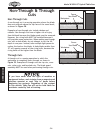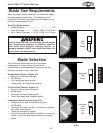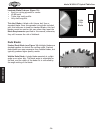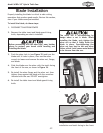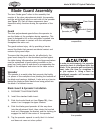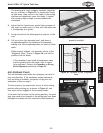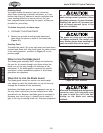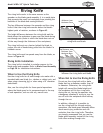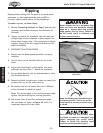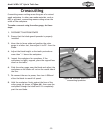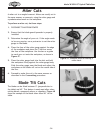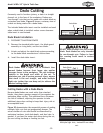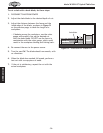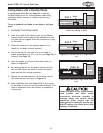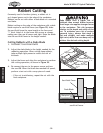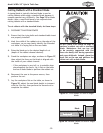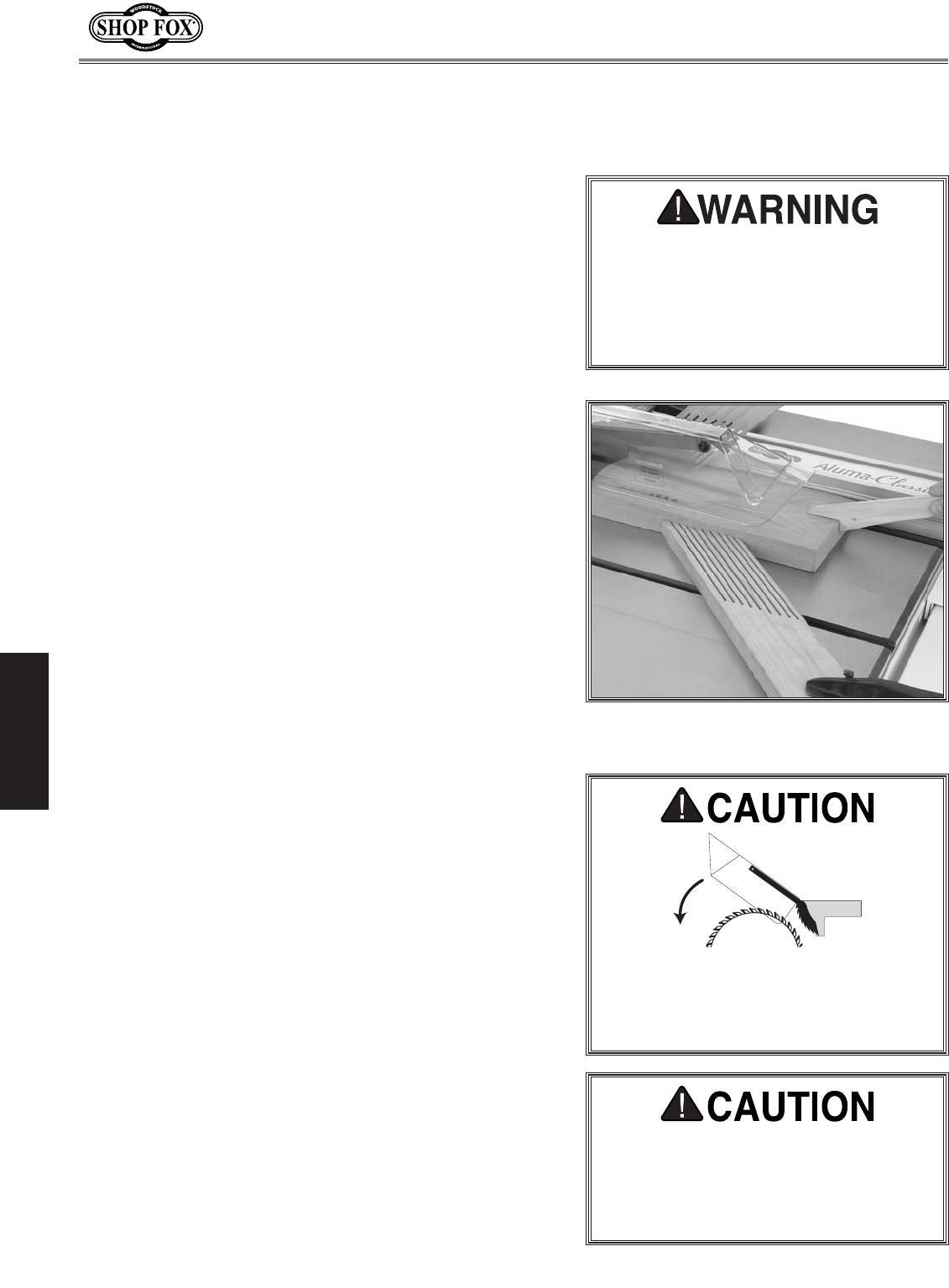
Df[\cN(/)+('?pYi`[KXYc\JXn
-32-
FG<I8K@FEJ
Ripping
Ripping means cutting with the grain of a natural wood
workpiece. In man-made materials such as MDF or
plywood, ripping simply means cutting lengthwise.
To make a rip cut, do these steps:
1. Review Preventing Kickback on Page 9 and take the
necessary precautions to reduce the likelihood of
kickback.
2. Inspect the board for soundness. You will need one
straight edge of the workpiece to place against the
fence when ripping. Also, if the workpiece is slightly
cupped, always place the cupped side down on the
table for stability.
3. DISCONNECT SAW FROM POWER!
4. Ensure that the blade guard/spreader is properly
installed.
5. Set the fence to the desired width of cut on the
scale.
6. Adjust the blade height so the highest saw tooth
protrudes no more than
1
⁄4" above the workpiece.
7. Set up safety devices such as featherboards or other
anti-kickback devices.
8. Rotate the blade to make sure it does not come into
contact with any of the safety devices.
9. Re-connect the saw to power, then turn it ON and
allow the blade to reach full speed.
Note: The jointed edge of the workpiece must slide
against the fence during the cutting operation.
10. Use a push stick to feed the workpiece through
the saw blade, as shown in Figure 45, until it is
completely beyond the saw blade.
Turn OFF the saw and ALWAYS allow
the blade to come to a complete stop
before removing the cut-off piece.
Failure to follow this warning could
result in serious personal injury.
Figure 45. Example photo of a ripping
operation.
Keep the blade guard installed and in
the down position. Failure to do this
could result in serious personal injury
or death.
Never attempt to rip a workpiece that
does not have one perfectly straight
edge on it. Always place the straight
edge against the rip fence. Failure to
do this could result in kickback and
serious personal injury.



